Mega Archive: Part XV: From Buck Rogers to Valis
By Mento 1 Comments
Here we are, the last of the 1991-based Mega Archives and the last one I'll be putting together for a while. I, perhaps unwisely, squeezed all twenty December releases for the Sega Mega Drive/Genesis into one entry here, so expect it to be a little larger than normal.
A conspicuous absence here, and something I'm going to have to carefully consider moving forward, are games available for the Mega CD. This optical disc media peripheral debuted in Japan on December 12th 1991 with two launch games - Heavy Nova and Sol-Feace - and four more later that same month: Earnest Evans, Wakusei Woodstock: Funky Horror Band, Nostalgia 1907, and Tenka Fubu: Eiyuutachi no Houkou. Heavy Nova is featured in today's episode due to a simultaneous Genesis release, while Earnest Evans and Sol-Feace will show up on the Genesis in early 1992 (the latter as "Sol-Deace") for a later Mega Archive entry to look at. Between the price, a minimal amount of third-party support due to a lack of devkits, and the low user install base for the Mega Drive in Japan, the peripheral didn't sell huge numbers and saw few games in its first year. It'll begin to explode once it launches in the US on October 15th 1992 as the Sega CD, but it'll be a long time before the Mega Archive gets there. Until then, there'll be a slow trickle of Mega CD games throughout 1992 that I'll have to contemplate whether or not to include. It's a different platform, one that's harder to glean screenshots from, and might be the purview of an entirely different Sega-based wiki feature. We'll see. (Hopefully by then I'll have come up with a better name for this hypothetical feature than "Sega CD's Nuts".)
One last note before we start: the Japanese Sega Mega Drive turned 21 today (October 29th)! Be sure to pour your alcoholic beverage of choice directly into your MD's cartridge slot to celebrate. While you're doing that, feel free to peruse all the Mega Archive entries thus far:
- Part I: 001-020 can be found here.
- Part II: 021-035 can be found here.
- Part III: 036-050 can be found here.
- Part IV: 051-065 can be found here.
- Part V: 066-080 can be found here.
- Part VI: 081-098 can be found here.
- Part VII: 099-115 can be found here.
- Part VIII: 116-130 can be found here.
- Part IX: 131-145 can be found here.
- Part X: 146-160 can be found here.
- Part XI: 161-175 can be found here.
- Part XII: 176-190 can be found here.
- Part XIII: 191-205 can be found here.
- Part XIV: 206-220 can be found here.
Part XV: 221-240 (December '91)
221: Buck Rogers: Countdown to Doomsday
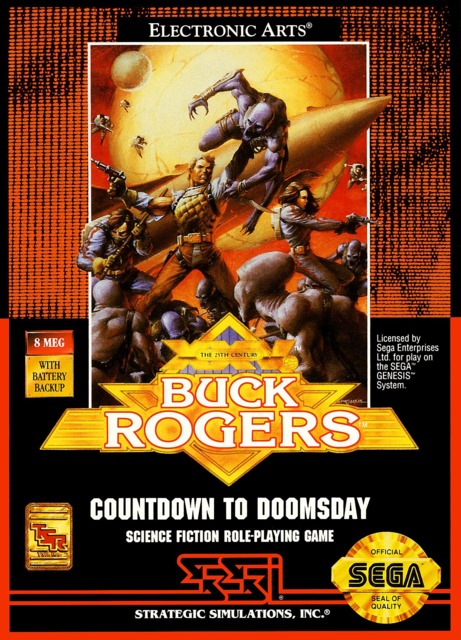
- Developer: SSI
- Publisher: Electronic Arts
- JP Release: N/A
- NA Release: December 1991
- EU Release: January 1992
- Franchise: Gold Box / Buck Rogers
- Genre: RPG
- Theme: Sci-fi
- Premise: Earth has been attacked and only Buck Rogers and the Neo Force can avenge it. Twiki better show up later or I'm out. Biddi-biddi-biddi.
- Availability: GOG has most of the Gold Box series, but not the two Buck Rogers games. If I had to guess I'd say it was a licensing issue. Dude's been around long enough that he has to be getting close to public domain, though (or maybe not).
- Preservation: I'd only been introduced to these Gold Box (referring to SSI's older RPG range, many of which were D&D branded, that balanced first-person exploration with a strategic top-down combat engine) sci-fi variants relatively recently, but I wasn't aware that one had made it to the Sega Genesis. Nor did I realize that this would be the only Gold Box game for the system. It makes a few concessions presumably for the sake of the console format, like switching the first-person adventuring to an isometric top-down perspective similar to the combat - maybe it was easier on the cartridge space to have both take similar forms? - and they greatly pared down the races, classes, and number of skills you can give characters during the creation process, helpfully eliminating all the skills that you would never actually need to beat the game but were options anyway. I don't think this is the ideal method to play something as relatively complex as a Gold Box game, but in these past few months the Genesis has been busy introducing classic CRPG franchises (Might and Magic, StarFlight, King's Bounty) to a younger audience that might've otherwise missed out on them.
222: California Games
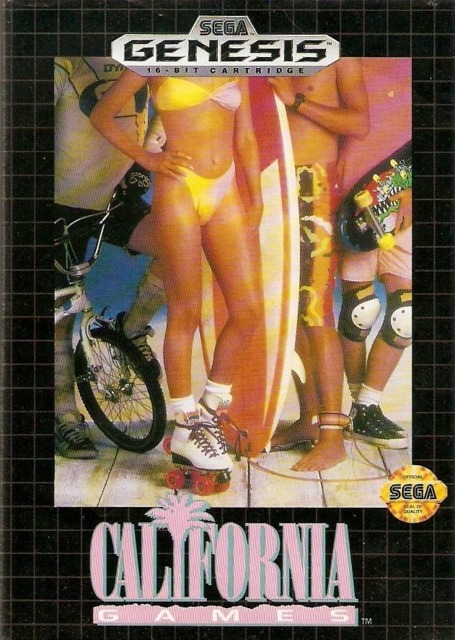
- Developer: Novotrade
- Publisher: Sega
- JP Release: N/A
- NA Release: February 1992
- EU Release: December 1991
- Franchise: California Games
- Genre: Sports
- Theme: Summer Jams
- Premise: Epyx brings you the Palm Springs vibes with this selection of beach and beach-adjacent activities. Anyone for footbag?
- Availability: If you own any system from the late '80s, California Games is probably available for it. There were rumors about a PS3/PSN rerelease, but I guess that didn't happen.
- Preservation: Epyx cornered the market on sports mini-game collections that were bizarrely difficult to play, and their ubiquity in the late '80s meant that a Genesis port was inevitable. Curiously, it doesn't seem like Epyx was involved with this port: it was developed by Novotrade, later known for the Ecco the Dolphin games, and published by Sega themselves. Novotrade improved the graphics but eliminated one of the better modes, the "flying disc" (gotta avoid branding), to reduce the total number to five (BMX, surfing, half-pipe skateboarding, rollerskating, and footbag/hacky sack). I always thought there was something serial killer-y with how the box art clipped off everyone's heads.
223: Chuck Rock
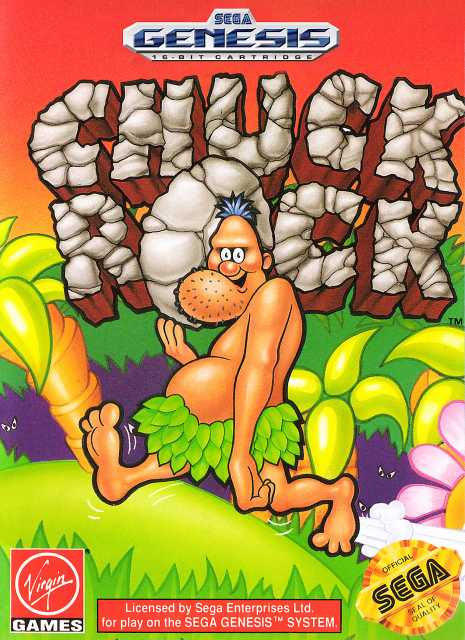
- Developer: Core Design
- Publisher: Virgin Interactive
- JP Release: N/A
- NA Release: December 1991
- EU Release: September 1992
- Franchise: Chuck Rock
- Genre: Platformer
- Theme: Prehistoric
- Premise: An early human rescues his girlfriend from his rival "Gary Gritter" (huh, just how old is she?) and a whole bunch of not-at-all-anachronistic dinosaurs. How much rock could a Chuck Rock chuck if a Chuck Rock could chuck rock?
- Availability: Nothing more recent than the '90s. The IP belongs to... Rebellion, I think? They've been remaking some of their older games (Rogue Trooper, for instance) but I doubt they'd be interested in dropping the two Chuck Rock games on GOG or Steam.
- Preservation: Now here's a game I know well, at least well enough to have written the GameFAQ walkthrough a whole other lifetime ago. The most enduring memory I have of this otherwise generic caveman platformer is its incongruously great theme music, something the Genesis version did a fair job trying to recreate. We also welcome Core Design with this entry: a UK Amiga/Atari ST developer that began porting over their games to the Mega Drive from this point on and would rise to global prominence many years later with the Tomb Raider franchise. We'll see the Chuck Rock sequel when the Mega Archive reaches 1993, and perhaps even its Sega CD cart racer spin-off a little later.
224: Speedball 2: Brutal Deluxe
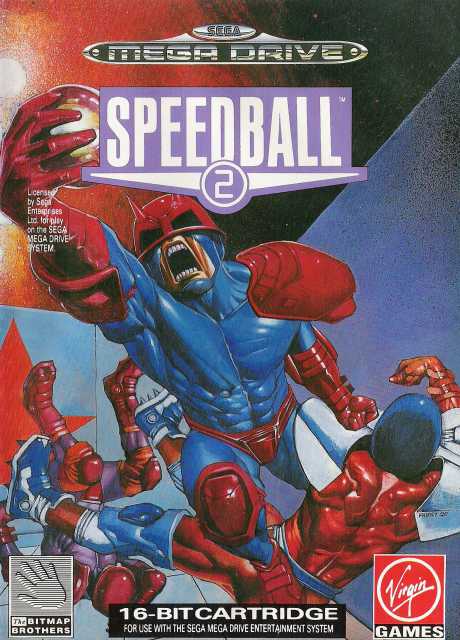
- Developer: The Bitmap Brothers
- Publisher: Arena (NA) / Virgin Interactive (EU) / CRI (JP)
- JP Release: 1992-06-19
- NA Release: December 1991
- EU Release: October 1992
- Franchise: Speedball
- Genre: Future Sports
- Theme: Future Sports
- Premise: Future sports! Where would we be without them? Probably right where we are already, because future sports don't exist yet.
- Availability: Speedball 2 HD, a flawed but faithful remake, is available on Steam and GOG.
- Preservation: Our second British Invasion for this entry, Speedball 2 is perhaps The Bitmap Brothers's most accessible hit - a sequel to their bloody future sport that is part football, part basketball, and part gladiatorial arena. It's actually a bit more like Rollerball by way of Quidditch, in that there's many different target zones you can hit to score extra points - from the reliable to the risky but rewarding - and it requires a bit of experimentation before you figure out which is the best course for you and your team. There's also some shallow team management/customization options as you're meant to switch out team-members for better players as you ascend through the league and earn more cash. I didn't play it a whole lot back when I owned the original Atari ST version, because for as much as I liked hurting people it quickly dawned on me how uncomfortably close it was to a real sports game.
225: Ninja Burai Densetsu
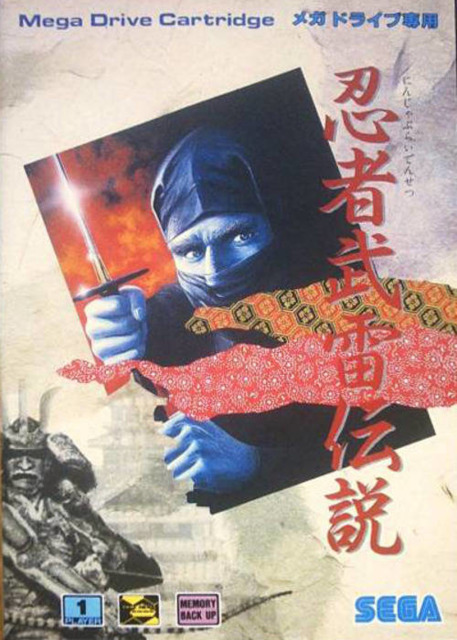
- Developer: SIMS
- Publisher: Sega
- JP Release: 1991-12-05
- NA Release: N/A
- EU Release: N/A
- Franchise: N/A
- Genre: Strategy
- Theme: Ninja
- Premise: You know what's cool? Ninja. Can't get enough ninja games on the Mega Drive. Especially strategy ninja games.
- Availability: Though it reviewed well, this game might be a little too generic to be fondly remembered enough for rereleases/remakes.
- Preservation: If I had to pluck for a comparison, Ninja Burai Densetsu is close to the 16-bit Fire Emblem games: units aren't so much separate characters but archetypes, each fitting a role that makes them superior against some unit types and inferior against others, and the player can upgrade them by visiting NPC towns and hopefully wandering into generous locals. Of course, the Mega Drive would get something similar in the Shining Force series before too much longer. This game's wholly in Japanese so I didn't play too long, but it does have those neat cutaways that Fire Emblem has where you see a 2D close-up of the two units duking it out. The internet seemed conflicted about who actually developed the game: Sanritsu or Sega. I figured SIMS was the likeliest suspect, as a joint production of the two companies set up earlier the same year specifically to make original Mega Drive games. (I was unable to localize the middle part of that title, but I think the whole thing might be something like "Legend of the Ninja Thunder Corps", as in suggesting a fast-acting team of ninja operatives. Kinda rad if true!)
226: Exile

- Developer: Micro Factory / Riot
- Publisher: Telenet Japan (JP) / Renovation (NA)
- JP Release: 1991-12-06
- NA Release: December 1991
- EU Release: N/A
- Franchise: XZR
- Genre: RPG
- Theme: Alternative History (and Time Travel?)
- Premise: Middle-Eastern badass Sadler gets dragged into another adventure involving all the major religions while taking any amount of hard drugs. It's a miracle this ever got localized, frankly.
- Availability: It's either this, a slightly more faithful TurboGrafx-CD localization, or the Japan-only MSX2 original. Telenet went defunct in 2007 but its IPs were bought by Sunsoft, which has expressed interest in re-releasing them in some form.
- Preservation: I covered Exile previously when going through all the TurboGrafx-CD releases and though it was hard to work out what was going on in the plot - you move around the world constantly, there's a lot of proper nouns based on obscure historical figures, and it's the second part of a contiguous series - the game itself is relatively straightforward, with side-scrolling action sequences bookended by top-down exploration and NPC dialogue. It's a breezy action-RPG that definitely goes some places, though the console versions sadly drop the part of the game where the Crusades-era desert warrior Sadler travels forward through time to modern day Manhattan to fight skateboarders.
227: Fighting Masters
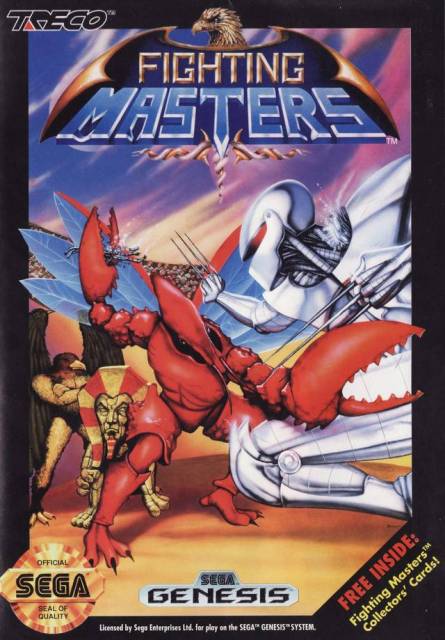
- Developer: Aicom
- Publisher: Treco
- JP Release: 1991-12-06
- NA Release: April 1992
- EU Release: N/A
- Franchise: N/A
- Genre: Fighting
- Theme: Sci-fi
- Premise: Twelve alien champions fight for the privilege of having their race spared from a giant supernova. Also, everyone's absurdly tall and they only have one attack button.
- Availability: Well, Aicom and Treco were both Sammy subsidiaries, and Sammy's part of Sega now. It's up to them whether or not they want to rerelease their 16-bit system's most powerful fighting game.
- Preservation: The game that introduced Goldrock to an unsuspecting (and dare I say undeserving) world, Fighting Masters is one of those fighters released during a time where - though Street Fighter II was already doing the rounds in arcades - there hadn't yet been that standardization of the genre where everything was either SF2 or a clone of SF2. Put another way, developers still thought they could come up with a more compelling structure for fighting games that wasn't all quarter-circle motions and 360 radials. Fighting Masters, bless its heart, figured that most players would be satisfied with just the one attack button and another dedicated to jumping, where punches, kicks and throws were determined by opponent proximity rather than bound to separate prompts. What galls most is that the Genesis had three face buttons and I'm sure everyone working on this game knew that. At least the alien fighter designs are cool, even if I have trouble believing Earth's champion would be some dude in blue Speedos called Larry.
228: Heavy Nova
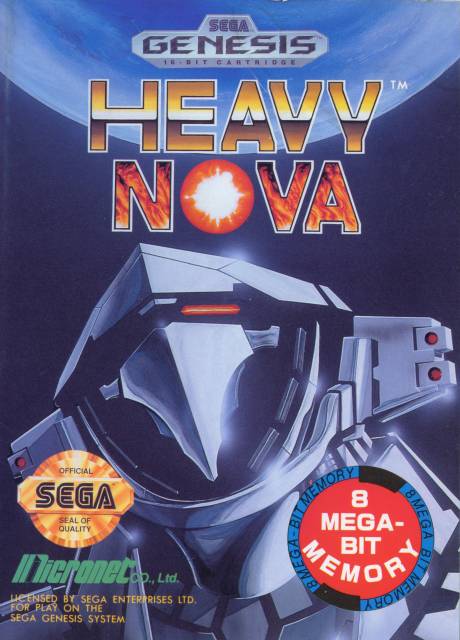
- Developer: Micronet
- Publisher: Micronet
- JP Release: 1991-12-12 (for Mega CD)
- NA Release: December 1991
- EU Release: N/A
- Franchise: N/A
- Genre: Fighting
- Theme: Sci-fi
- Premise: Jerk aliens tried to take us over but we fought them off with their own giant robot suits. The military now trains new robot operators in case they come back, and the player is looking to become the best one.
- Availability: A heavy no. Micronet is still around but they abandoned game development decades ago.
- Preservation: Talking of novas and terrible fighting games, Heavy Nova is the first of a brief number of games that were released for the Mega CD in Japan but the normal Sega Genesis in North America, during that ten-month window where Japan had the CD peripheral and America did not. It features mechs (or maybe robots) that fight each other in really stiff and sluggish battles that, in all fairness, is probably accurate for giant machines weighing several tons apiece. I will also say in its defense that at least it has separate buttons for punches and kicks: an extremely small bar to pass, but somehow worthy of note in this particular instance. Otherwise, it's a proto-Rise of the Robots without anything like its rad Brian May soundtrack (at least for the Genesis version; the Mega CD had the benefit of CD audio). (Also, some sources seem to think a company named Holocronet made the game, but there's absolutely zero information out there on this mysterious developer. I wonder if it wasn't Micronet being cute with a sci-fi alias.)
229: NHK Taiga Drama: Taiheiki
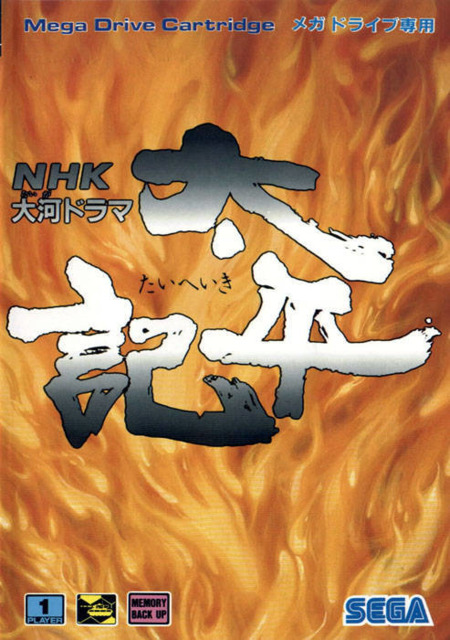
- Developer: NHK / TOSE
- Publisher: Sega
- JP Release: 1991-12-13
- NA Release: N/A
- EU Release: N/A
- Franchise: N/A
- Genre: Strategy
- Theme: Feudal Japan
- Premise: It's a strategy sim based on a TV show based on a medieval book based (loosely) on a real-life historical period. Some strong "Telephone Game" interference has to be settling in at this level.
- Availability: NHK explicitly commissioned this game as a tie-in for their show, so unless they're scheduling reruns I can't see it coming back.
- Preservation: NHK is Japan's equivalent of the BBC - a publicly owned company that solicits a "license fee" from its native citizens, and tends to produce a lot of worthy period dramas in addition to mostly neutral news, coverage of big sports events like the Olympics, and other entertainment media. If NHK is known for anything overseas, it's probably their toothy brown mascot Domo-kun and the memes that surround it. This game was either developed by a division within NHK or produced on their behalf by Sega, as there was another Taiheiki adaptation for the PC Engine out around the same time that looked a lot different: it could well be two distinct spins on the same material. The Mega Drive game, at least, is another like Ninja Burai Densetsu above where it's a grid-based strategy game with medieval Japanese units. However, whole troops fight in automatic skirmishes when two unit icons meet rather than one-on-one fights, and there's even a playable segment of these battles where troop leaders take each other on in these cool horseback archery duels.
230: Quackshot Starring Donald Duck
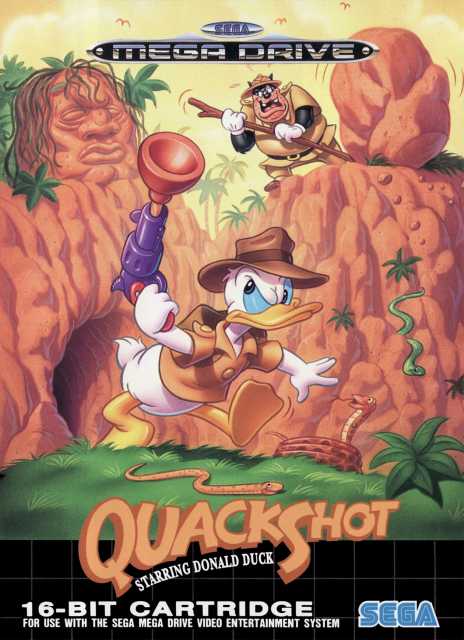
- Developer: Sega
- Publisher: Sega
- JP Release: 1991-12-20
- NA Release: 1991-12-19
- EU Release: December 1991
- Franchise: Disney / Donald Duck
- Genre: Platformer
- Theme: High Adventure
- Premise: Donald's travelling the world doing the usual touristy stuff: checking out landmarks, eating local food, and stealing priceless cultural treasures to put in a museum back home.
- Availability: Quackshot's return is really up to Disney. They were happy enough to sign off on a 2013 remake of Castle of Illusion... at least until it got delisted a couple years back. As for video games starring Donald Duck, you could always play Kingdom Hearts III from earlier this year. I mean, you could.
- Preservation: This Indiana Jones-styled platformer with Donald Duck is part of a larger series of Disney-Sega collaborations that are usually followed by "of Illusion" for their localizations, and is more explicitly based on the Donald Duck comic book universe of Carl Banks that was more heavily influenced by the same kind of adventure serials that also begat Indiana Jones (and DuckTales, of course). The game has a mild non-linear edge to it where you might revisit earlier stages with some newly upgraded plunger weapon that allows you to reach new areas - it's not quite a full spacewhipper, but something closer to Mega Man X where it's sometimes worth going back a few levels for some useful upgrades. It also looks and sounds great: a testament to how seriously Sega took their partnership with Disney.
231: Dahna: Megami Tanjou
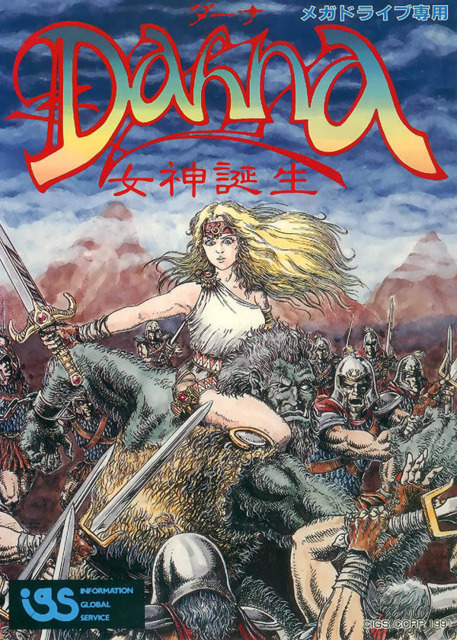
- Developer: IGS
- Publisher: IGS
- JP Release: 1991-12-20
- NA Release: N/A
- EU Release: N/A
- Franchise: N/A
- Genre: Action
- Theme: Fantasy
- Premise: Someone stole Dahna's magical grampa and now she has no end of asses to kick to fetch him back.
- Availability: IGS, along with this game's license, is lost to the ether. No-one seems to know what happened to them.
- Preservation: My favorite part of doing this series is discovering some badass game I'd never heard of before, and Dahna: Megami Tanjou - "Birth of the Goddess," not to be confused with Megami Tensei ("Reincarnation of the Goddess") - fits that bill. It's specifically built like Rastan (IGS has former Taito staff) but with a female protagonist who will occasionally befriend some fantastical creature and ride it into battle. This also gives the game a bit of variance between stages, as you can be chopping your way through faceless blue troops and monsters one moment and then be racing down a mountain on horseback or through the skies on a griffin the next. Like Rastan, and modern day takes like Volgarr the Viking or Valfaris, the game is exceptionally challenging and will only reward those that are already somewhat adept at it: Dahna can use magic but she must kill enough specific enemies that drop magic orbs for the stronger spells, and she can increase her maximum health by gaining XP but that means killing every enemy instead of safely letting them pass by. Definitely not a forgiving game, and maybe a bit stiff with its controls, but still kinda rad. Shame it never left Japan.
232: Double Dragon II: The Revenge
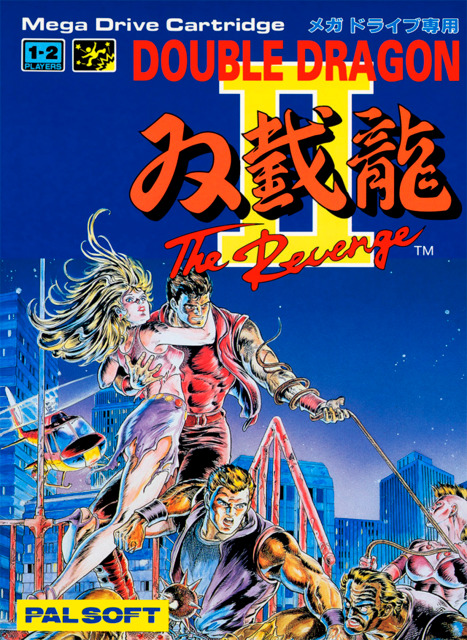
- Developer: PalSoft
- Publisher: PalSoft
- JP Release: 1991-12-20
- NA Release: N/A
- EU Release: N/A
- Franchise: Double Dragon
- Genre: Brawler
- Theme: Crime / Martial Arts
- Premise: Machine Gun Willy isn't going through all the trouble again of kidnapping a hostage and having to feed her and such, so he just guns down Marian instead. Surely the Dragon brothers will be OK with that? They won't even have to get up off the sofa.
- Availability: The Mega Drive version might be a pain to track down, but if you just want to play some Double Dragon II in its purest form you can buy it on Switch via the Arcade Archives.
- Preservation: Though the Sega Mega Drive was the arcade gamer's 16-bit console, it didn't have too many brawlers beyond Sega's own fantastic Streets of Rage and Golden Axe franchises. Even Double Dragon, Technos's more US-receptive brawler series, only showed up several years into the console's lifespan and only on the Japanese Mega Drive (and it's the goofier sequel, no less). Sadly, it's not a particularly good port: the colors are washed out, the combat's stiff, and it seems way easier to get stun-locked by enemies with weapons. PalSoft is the credited publisher, but it's unclear whether they also did the port development or hired some unknown contractor to do it for them. If you want a better Double Dragon II port that's equally off-piste, try the PC Engine CD-ROM version with its hot/wild music and cutscenes.
233: F1 Circus MD
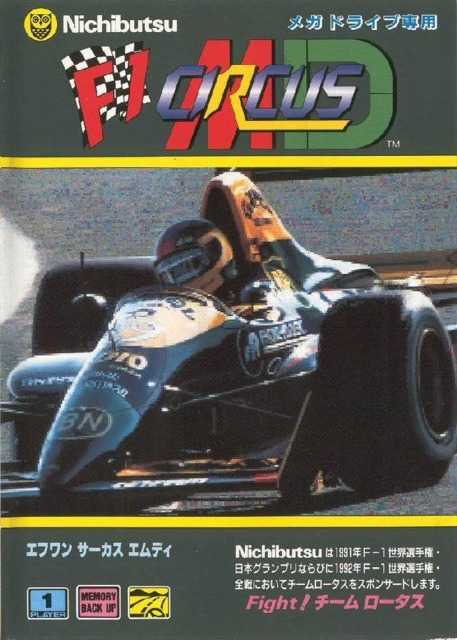
- Developer: Nichibutsu / Micronics
- Publisher: Nichibutsu
- JP Release: 1991-12-20
- NA Release: N/A
- EU Release: N/A
- Franchise: F1 Circus
- Genre: Racing
- Theme: Motorsports
- Premise: The F1 Circus franchise comes to the Mega Drive for this one-off entry. Thrill, as you take to the courses in a top-down perspective that gives you very little forewarning of upcoming corners. Gasp, as you spend hours fretting over components to go on your F1 car because the course might be a little wet. Lament, as you realize this is probably the eighth or ninth one of these interminable F1 Circus games you've added to the wiki by now.
- Availability: Gonna say a 1991 F1 game rereleased this century is going to have trouble finding an audience, let alone a worthwhile licensing agreement from the Formula One Group.
- Preservation: My old nemesis returns. There are certain long-running franchises of so little significance that some sucker finds him or herself adding every single one of its near-identical entries to the wiki. That's frequently the case for sports and racing franchises in particular, which depreciate so much over the course of a single year and are quickly forgotten. The F1 Circus, which are usually but not always top-down racing affairs, has four TurboGrafx/PC Engine entries and five for the SNES/SFC; for some reason Nichibutsu just did the one for Mega Drive, which is an almost identical port of the TG16's F1 Circus '91. The Circus will be back in town eventually, but only for a single Mega CD entry in 1994.
234: Nakajima Satoru Kanshuu F1 Grand Prix
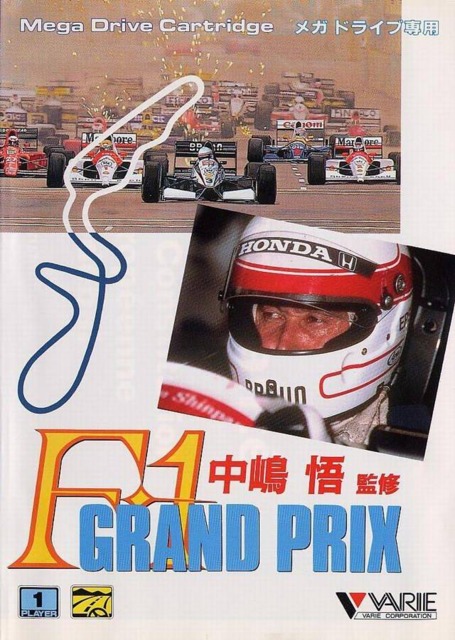
- Developer: Varie
- Publisher: Varie
- JP Release: 1991-12-20
- NA Release: N/A
- EU Release: N/A
- Franchise: Nakajima Satoru Kanshuu F1
- Genre: Racing
- Theme: Motorsports
- Premise: Let professional raceman Satoru Nakajima tell you how to race the best out of all the other racepeople in this, another racing game.
- Availability: If a 1991 F1 game was hard enough to rerelease in 2019, one that also features the likeness of a retired driver would be even more so.
- Preservation: That's always the way with Formula One games, you wait forever for none to show up and then two appear on the same day. The appeal of Drew S. and Danny O'D.'s favorite motorsport is lost on me, but I think that's largely because of working on all these darn pages. They're not the highlight of this little archival journey I'm on, but I can at least appreciate that it's one of the few sports, like soccer and rugby, that Japan and the UK seem to share an affection for while the US is left scratching their heads over how anyone could prefer it to the endlessly cyclical fun of the Indy 500. Nakajima Satoru, Japan's version of Dale Earnhardt Jr., lends his name to this particular F1 racer which already puts it on firmer ground than F1 Circus MD. Varie had interests outside of licensed F1 games but you wouldn't know it from seeing their MD catalog, which is wall-to-wall open-wheel vrooming around. Back over on the SFC they squeezed out the universe's first NJPW games, so it's probably a shame to Sega puroresu fans that they never thought to bring those over too.
235: Nobunaga no Yabou: Bushou Fuuunroku
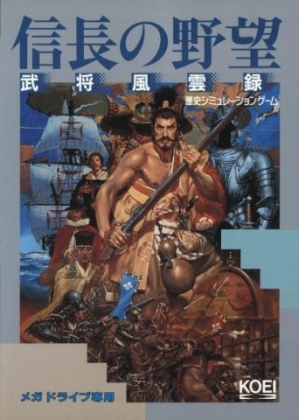
- Developer: Koei
- Publisher: Koei
- JP Release: 1991-12-20
- NA Release: N/A
- EU Release: N/A
- Franchise: Nobunaga's Ambition
- Genre: Strategy
- Theme: Sengoku
- Premise: In Nobunaga: No! Yabbos!, Nobunaga's grown another pair of yabbos and needs to keep this embarrassing anatomical secret from his closest general buds in an all-new season of the lewd but heartwarming anime. (Nobunaga no Yabou is Nobunaga's Ambition and is exactly what you think it is.)
- Availability: There are newer and presumably better Nobunaga's Ambitions games out there, but if your heart's set on this one the SNES release was localized as Lord of Darkness. Might be easier to follow in English.
- Preservation: It's strange - I must have mentioned Koei and its output so many times when referring to other strategy games on the Mega Archive, but I believe this is the first time they've shown up on here in person. Bushou Fuuunroku is Lord of Darkness, the official third game (though it's technically the fifth) in Koei's long-running franchise about Sengoku warfare and riveting prefecture management. Koei felt right at home on the Mega Drive, possibly due to its PC developer-friendly Motorola 68k chip, and would continue to release over a dozen of their simulators on the system from franchises like Romance of the Three Kingdoms, Aerobiz, and Uncharted Waters. Koei also dug up and released the first Nobunaga's Ambition on Mega Drive in 1993 (which also received a localization). These games were as popular as they were dense, which is why we've been seeing so many clones. Don't expect those to stop now that the real McCoy has shown up.
236: Task Force Harrier EX
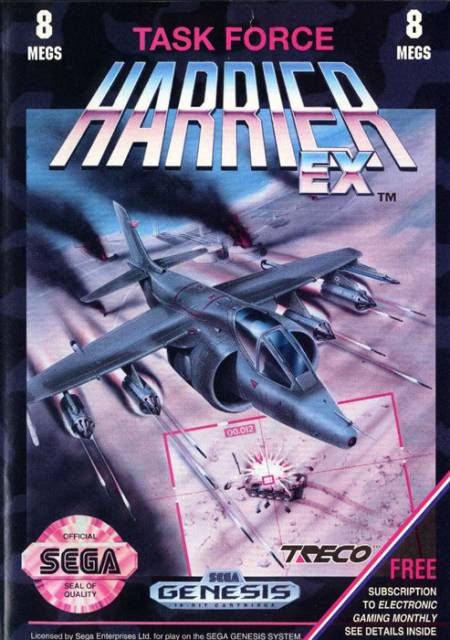
- Developer: Jorudan
- Publisher: Treco
- JP Release: 1991-12-20
- NA Release: February 1992
- EU Release: N/A
- Franchise: N/A
- Genre: Shoot 'em Up (Vertical)
- Theme: Modern Military
- Premise: I wish I was piloting a harrier. I wish I had a barrier. I wish I had a girl, giving missions, I would marry her. I wish I could shoot enemies a bunch, then eat lunch, on an aircraft carrier.
- Availability: Unlikely to come back. UPL, the original developers, vanished in '92 and its IPs presumably belong to its parent Universal/Aruze, a pachinko machine company. (Apropos of nothing, but Aruze also owns the rights to Shadow Hearts and I really wish they'd let someone work on a HD trilogy.)
- Preservation: It feels like it's been a hot minute since we've seen a classic vertical shoot 'em up on the Mega Archive, when not too long ago half the entries in a single episode would be interchangeable shmups. The big deal with Task Force Harrier (they added the EX for the Genesis version) is that you could acquire two options and then cycle through formations for them, putting them ahead, behind, or a further apart on the sides. These options, in addition to adding to your firepower, could also absorb bullets, making their positioning tactically invaluable for boss fights and similarly tense enemy waves. It's also a Xevious style shoot 'em up, which means both air and ground targets to aim for (the game's kind enough to map the air-to-ground bombs and air-to-air bullets to the same button).
237: Undeadline
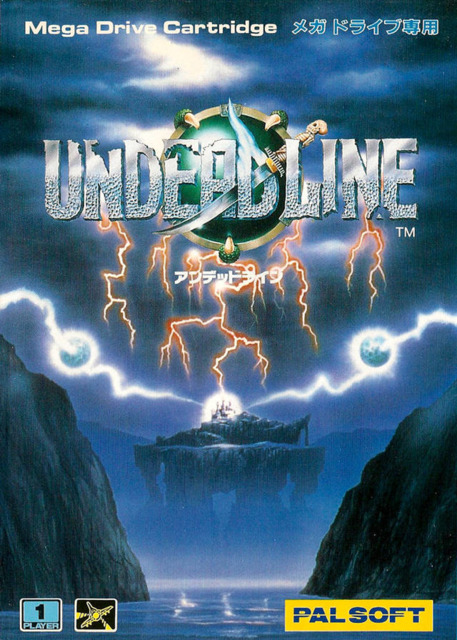
- Developer: PalSoft
- Publisher: PalSoft
- JP Release: 1991-12-20
- NA Release: N/A
- EU Release: N/A
- Franchise: N/A
- Genre: Shoot 'em Up (Vertical)
- Theme: Horror
- Premise: Just in time for, uh, Christmas, this horror-themed shoot 'em up is full of death. That's my dignity-preserving way of saying that I could barely survive more than a minute.
- Availability: D4 owns the rights to T&E Soft's library, so this might wind up on their Project EGG service some day. Hope you have a Japanese credit card handy.
- Preservation: This is a cool if odd approach to a shoot 'em up that you only occasionally see, where the protagonist is a dude running around but the game still flows like a shoot 'em up with its automatic vertical scrolling and incoming enemy waves. It somehow manages to be a horror game too, with lots of unexpected surprises that you have to be ready to dodge or shoot down at less than a moment's notice. It has a Mega Man style level select if you're dying too often on one level and need a change of pace, and though I was unable to reach one the bosses look cool. Like PalSoft's other Mega Drive port this episode, Double Dragon II, they made some compromises like cutting the number of protagonists to just the one blond dude and decreasing the amount of horizontal space you can move in, but it's playable enough.
238: Romance of the Three Kingdoms II / Sangokushi II

- Developer: Koei
- Publisher: Koei
- JP Release: 1991-12-26 (as Sangokushi II)
- NA Release: July 1992 (as Romance of the Three Kingdoms II)
- EU Release: N/A
- Franchise: Romance of the Three Kingdoms
- Genre: Strategy
- Theme: Ancient China
- Premise: Get to warmongering already. Ancient China isn't going to unite itself. I wonder if Cao Cao ever executed anyone for comparing him to Winnie the Pooh?
- Availability: Like with Nobunaga's Ambition, Koei's been putting out slightly better games based on the same exact conflict for over two decades. I might not recommend the most recent Dynasty Warriors though. Yikes.
- Preservation: Koei moves fast, huh? Not even a week has passed and they already have their second release for the Mega Drive: the second chapter of their Chinese-themed strategy series Romance of the Three Kingdoms. It's really just a Sinocentric take on Nobunaga's Ambition with the same format in place. Pick a scenario, pick a warlord, and then pick apart your enemy's forces one by one as you take over China. Of the features added to RotTK II, there's a new reputation system where your honor decreases if you decide to raze too many peasant villages or cut down retreating enemy forces. If it gets low enough, eventually your generals and lieutenants will actually defect from your side figuring anyone would be a better future emperor of China than Burny McMurderboner over here.
239: Golden Axe II
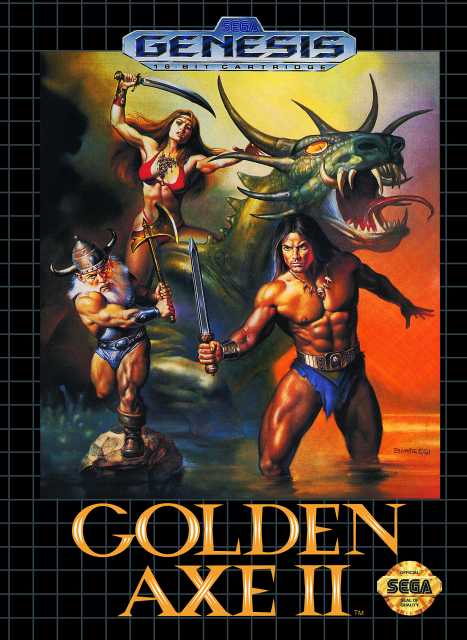
- Developer: Sega
- Publisher: Sega
- JP Release: 1991-12-27
- NA Release: January 1992
- EU Release: January 1992
- Franchise: Golden Axe
- Genre: Brawler
- Theme: Fantasy
- Premise: See what happens when you just leave the Golden Axe lying around? Some other armored goon with Schwarzenegger abs comes along and claims it. Time to go kick some gnomes in the face again.
- Availability: It's in almost every Genesis compilation of note and can also be purchased as a standalone from Steam directly. Not on the Genesis Mini though, oddly.
- Preservation: There was a tendency of Sega's to release Genesis-exclusive "sequels" to their biggest arcade games, like Space Harrier II and Super Thunder Blade, which were actually just slight remixes of the originals. That's also the case here, with Golden Axe II close to a carbon copy of the original with the same three protagonists and most of the level design and enemies still intact. What's weird is that the Genesis already had a Golden Axe port a long time ago [Ep. II] so this really feels like Sega trying to pull a Malibu Stacy (With a New Hat!) on us. Even so, there are perhaps enough new tweaks and additions to justify buying it again, especially as it's still one of the best first-party arcade conversions for the platform. Hard to mess up a game where you walk right and hit people with a sword.
240: Valis: The Fantasm Soldier
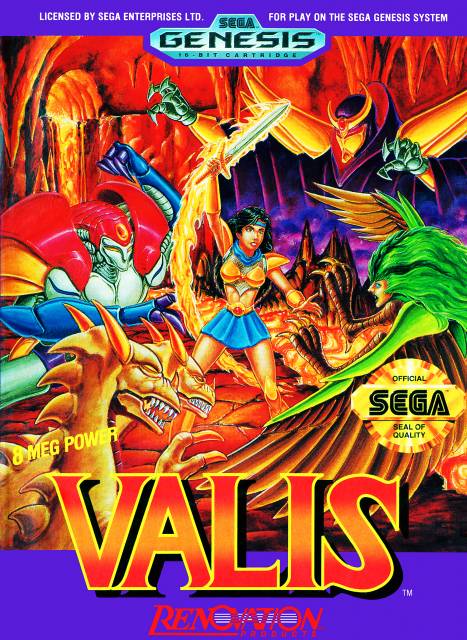
- Developer: Riot
- Publisher: Telenet Japan (JP) / Renovation (NA)
- JP Release: 1991-12-27
- NA Release: December 1991
- EU Release: N/A
- Franchise: Valis
- Genre: Brawler
- Theme: Fantasy / Anime
- Premise: A typical highschooler unexpectedly becomes a demon slayer in the first of these anime-styled hack n' slashers. With its Genesis debut, you can no longer say that Valis doesn't live here anymore.
- Availability: Let's skirt right past where the Valis franchise eventually ended up and say that it's probably for the best it doesn't come back. Some things can't be undone.
- Preservation: For any western Valis fan, the Genesis localization of Valis: The Fantasm Soldier is fondly remembered for being the only official version of the first Valis released in English. However, it has been heavily modified in comparison to how the original 1986 MSX game used to look and play: this is due to this port coming on the heels of Valis II and Valis III, incorporating new gameplay tweaks and additions from those games such as a high jump and a magic system, while retaining the original story of how Yoko Aso first came to be the Valis Warrior. The PC Engine CD version is a lot better, both graphically and in how it feels to play (for whatever reason, Genesis Yuko is sluggish as hell), but there are certainly worse Valis games out there. Good lord, yes.

1 Comments